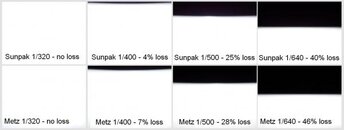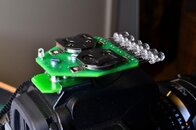tamas970
Contributor
- Messages
- 610
- Reaction score
- 59
- # of dives
- 100 - 199
Yes, it comes with the FL-LM1 flash. It's power is variable, I'll test the TTL functionality a bit thoroughly with my Inons later today.
I checked the sync speed of my e-pl5 with 2 land-use flashes (Metz 50AF-1 and an ancient Sunpak 355AF), in case the Metz I covered the communication port (cannot be done with the with the proprietary Olympus port the FL-LM1 uses ). The Sunpak doesn't communicate anyway. Seems, 1/400 is acceptable with <<10% coverage loss (the firmware allows only 1/250 for the FL-LM1 and the miserable 1/160 for any hotshoe mounted 3rd party flashes):
). The Sunpak doesn't communicate anyway. Seems, 1/400 is acceptable with <<10% coverage loss (the firmware allows only 1/250 for the FL-LM1 and the miserable 1/160 for any hotshoe mounted 3rd party flashes):

I checked the sync speed of my e-pl5 with 2 land-use flashes (Metz 50AF-1 and an ancient Sunpak 355AF), in case the Metz I covered the communication port (cannot be done with the with the proprietary Olympus port the FL-LM1 uses





